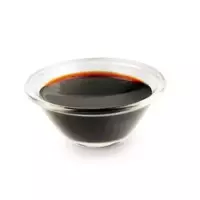Kikkoman sauce

Kikkoman sauce is called the standard among soy sauces. The "golden" classic soy sauce kikkoman became no coincidence. Those who have had a chance to try the sauce at least once understand why kikkoman is considered a brilliant masterpiece of Asian cooking. The exclusivity of the composition of kikkoman sauce lies in the versatility of the product, which is perfectly combined, both with exotic dishes from Asian countries and with European culinary traditions.
The history of kikkoman sauce officially began in the 17th century, when two Japanese families Mogi and Takanashi decided to open their own soy sauce production. The first, albeit small and home-made kikkoman sauce was located near Tokyo. It is noteworthy that the recipe for kikkoman sauce came to Japan from China. Historians claim that the inhabitants of the Celestial Empire began to produce kikkoman sauce
2. 5 thousand years ago.
Composition of kikkoman sauce
The Japanese changed the composition of kikkoman sauce. Until now, the original recipe for kikkoman sauce has been kept secret. However, it is known that kikkoman sauce includes soy, water, wheat, some salt and, perhaps, the main component is time. To get more than 300 flavors in one product, you need to insist on all the ingredients of the sauce for about a year. The uniqueness of kikkoman sauce lies in the natural origin of all ingredients and the absence of additives or dyes. The manufacturer claims that the distinctive taste and aroma of kikkoman sauce is obtained as a result of the production process, which is based on the natural fermentation method.
Japanese kikkoman sauce or vinegar chi differs from its Chinese counterpart in a softer, more refined and refined taste. Currently, kikkoman soy sauce is considered the most popular ingredient used in Japanese traditional cuisine. There are several varieties of sauce that differ in composition, as well as consumer, taste and aroma characteristics.
Already at the beginning of the 18th century, Japanese kikkoman sauce penetrates into Europe, where it instantly deserves recognition and not only among foodies and lovers of Asian cooking. Kikkoman sauce appealed to the discerning European public due to its distinctive taste. And by the beginning of the 19th century, kikkoman sauce regularly participates in international exhibitions and even wins the first prizes.
In the 20th century, the descendants of the Mogi and Takanashi families organized a company to produce the famous kikkoman sauce. Nowadays, Noda Shoyu Co. , Ltd Corporation is renamed Kikkoman Corporation and is the market leader in the production and sale of real kikkoman soy sauce. It is noteworthy that kikkoman sauce is produced not only in Japan, the company's factories operate in Europe and America. This suggests that kikkoman sauce has become world famous and has earned international recognition among consumers in different countries.
kikkoman sauce 73 kKal
Energy value of kikkoman sauce (Ratio of proteins, fats, carbohydrates - ju):
Proteins: 10 g (~ 40 kCal)
Fats: 0 g (~ 0 kCal)
Carbohydrates: 8g (~ 32kCal)
Energy ratio (b | y): 55% | 0% | 44%
 Español
Español Français
Français Português
Português Русский
Русский 简体中文
简体中文 繁體中文
繁體中文 日本語
日本語 한국어
한국어 العربية
العربية Türkçe
Türkçe Қазақ
Қазақ Deutsch
Deutsch Italiano
Italiano Українська
Українська
